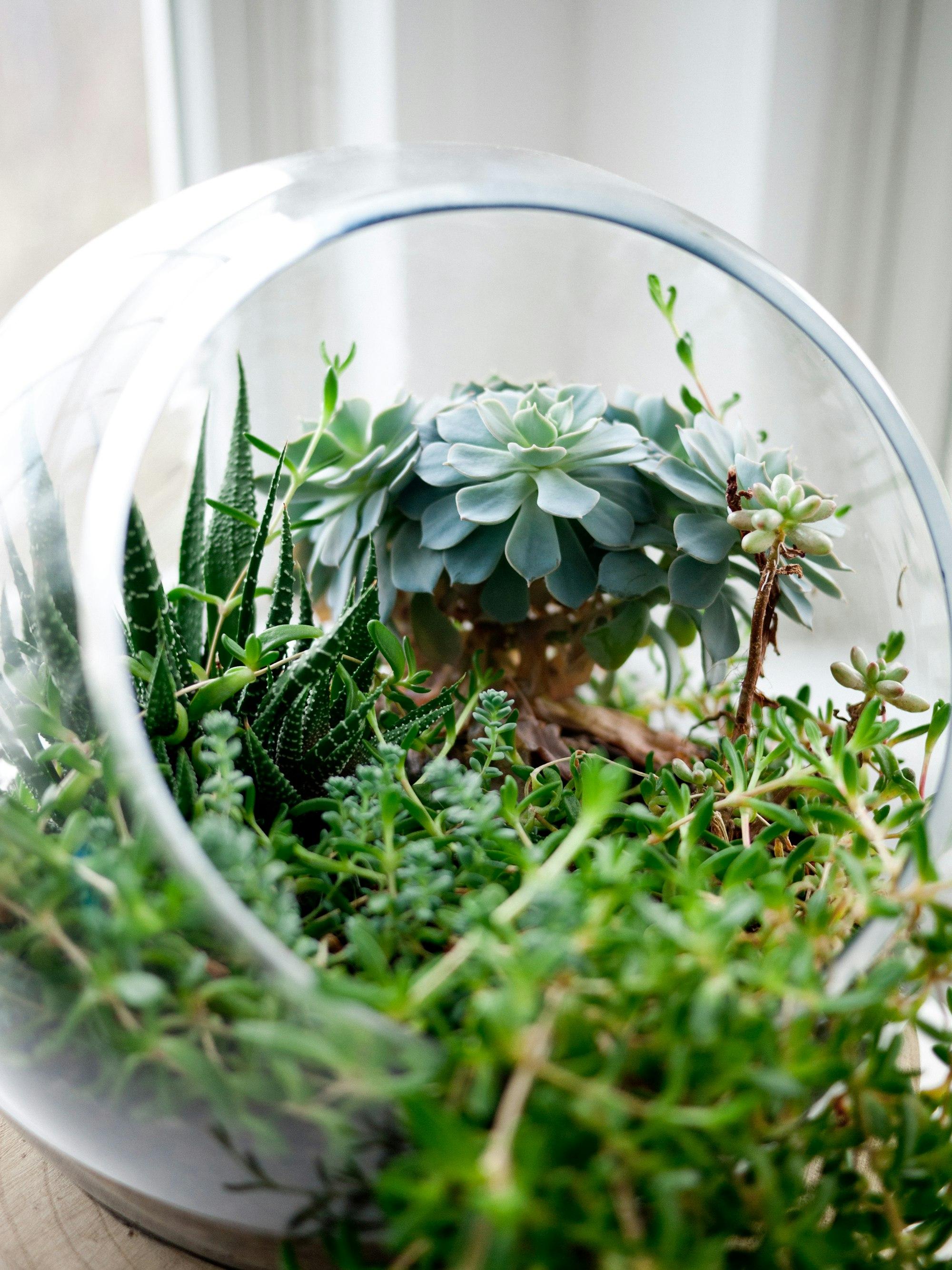What is a Terrarium?
Tiny worlds, big impact: Terrariums bring lush landscapes to your tabletop. These self-contained ecosystems offer a slice of nature, no green thumb required!

Imagine having the power to create and control your own miniature ecosystem. No, we're not talking about a secret lab experiment or a sci-fi movie plot. We're talking about terrariums – the tiny glass worlds that let you play Mother Nature without the need for a PhD in botany or a magic wand.
A terrarium is a small, enclosed ecosystem that brings a touch of green life to any space. It's like a snow globe, but instead of fake snow and plastic figurines, you've got real, living plants thriving in their own little biosphere. Who said you couldn't keep a jungle on your desk?
Understanding the Concept of a Terrarium
At its core, a terrarium is a sealed or partially sealed clear container filled with small plants and a growing medium. It's a self-contained garden that creates its own climate, often requiring minimal care. Think of it as a greenhouse that fits on your coffee table – a little slice of nature that you can observe up close without getting your hands dirty (well, not too dirty).

Historical Context
The concept of terrariums dates back to the 19th century, and like many great inventions, it was discovered by accident. In 1842, Dr. Nathaniel Bagshaw Ward, a London physician with a passion for botany, noticed that fern spores and seeds in a sealed glass bottle had germinated and grown into plants without any watering.
This accidental discovery led to the development of what was then called the "Wardian case," which revolutionized the transportation of plants across long distances during the Victorian era. Today's terrariums are descendants of these early plant-moving devices, albeit with a more decorative twist.
Types of Terrariums
Terrariums come in various styles to suit different preferences and plant types:
- Closed Terrariums: Fully sealed containers that create a self-sustaining water cycle. Perfect for tropical plants that love humidity.
- Open Terrariums: Containers with an opening that allows for air circulation. Ideal for succulents and cacti that prefer drier conditions.
- Hanging Terrariums: Suspended glass globes or geometric shapes that add a touch of whimsy to your decor.
- Bottle Terrariums: Created in recycled bottles or jars, these are great for a DIY project with a vintage feel.
- Themed Terrariums: From miniature fairy gardens to zen-inspired landscapes, these tell a story within their glass walls.
The Functionality and Versatility of Terrariums
Terrariums are the Swiss Army knives of the plant world. They can:
- Bring nature indoors, especially in urban environments with limited green space
- Serve as living decor, adding a unique touch to any room
- Act as a low-maintenance option for plant enthusiasts or beginners
- Function as educational tools, demonstrating ecosystems and plant growth
- Improve air quality and create a sense of calm in your space

Using Terrariums in Home Decor
Terrariums can be fantastic additions to various areas in your home:
- Living Room: Place a terrarium as a centerpiece on your coffee table or side table.
- Home Office: Add a small terrarium to your desk for a touch of nature while you work.
- Bathroom: Use a humidity-loving terrarium to add life to your bathroom decor.
- Kitchen: Create an herb terrarium for both decoration and culinary use.
Making the Most of Terrariums in Small Spaces
If you're dealing with limited space, terrariums can be your green thumb's best friend:
- Opt for hanging terrariums to save surface space.
- Create a terrarium in a unique container like a light bulb or tea cup for a space-saving conversation piece.
- Use wall-mounted terrariums to create a living wall art installation.

Creating Your Own Terrarium
Ready to play god in your own little glass world? Here's a basic guide:
- Choose your container – clear glass works best.
- Add a layer of small rocks or pebbles for drainage.
- Add activated charcoal to keep the environment fresh.
- Add a layer of potting soil suitable for your chosen plants.
- Plant your miniature garden, starting with the largest plants.
- Add decorative elements like small figurines or colored stones.
- Water lightly and place in indirect sunlight.
Care and Maintenance of Your Terrarium
To keep your tiny ecosystem thriving:
- For closed terrariums, water sparingly – if you see condensation, it's moist enough.
- Open terrariums may need more frequent watering.
- Remove any dead leaves or plants promptly.
- If plants outgrow the container, trim them or replant your terrarium.

Final Thoughts
Terrariums are more than just trendy decor; they're tiny worlds that bring a piece of nature into our increasingly urban lives. Whether you're a seasoned plant parent or a beginner looking for a low-maintenance green friend, a terrarium offers a unique way to incorporate plants into your living space.
From Victorian plant transportation to modern home decor, terrariums have evolved into a perfect blend of science, nature, and art. So why not create your own little world in glass? After all, who says you need a backyard to have a garden?
Check out terrariums and faux plants on Spoken and never overpay making your home beautiful.
Quick facts
What is the purpose of a terrarium?
A terrarium creates a self-contained ecosystem for plants, serving both decorative and educational purposes.
What is terrarium in simple words?
A terrarium is a small, enclosed garden in a clear container, like a glass jar, creating a mini landscape for plants.
How long do terrariums last?
Terrariums can last indefinitely with proper care, though open terrariums may need replanting after 2-5 years.
How does a terrarium work?
Terrariums recycle moisture and nutrients within a closed system, creating a mini ecosystem with minimal external input.

Mihai Crisan
Software Engineer at Spoken
Mihai is a dedicated software engineer at Spoken, where he combines his passion for technology with his professional expertise. As a tech geek, he is always on the lookout for innovative solutions to simplify and enhance people's lives through cutting-edge technology. Mihai’s curiosity drives him to explore and implement new ideas that make a real impact.
Read more